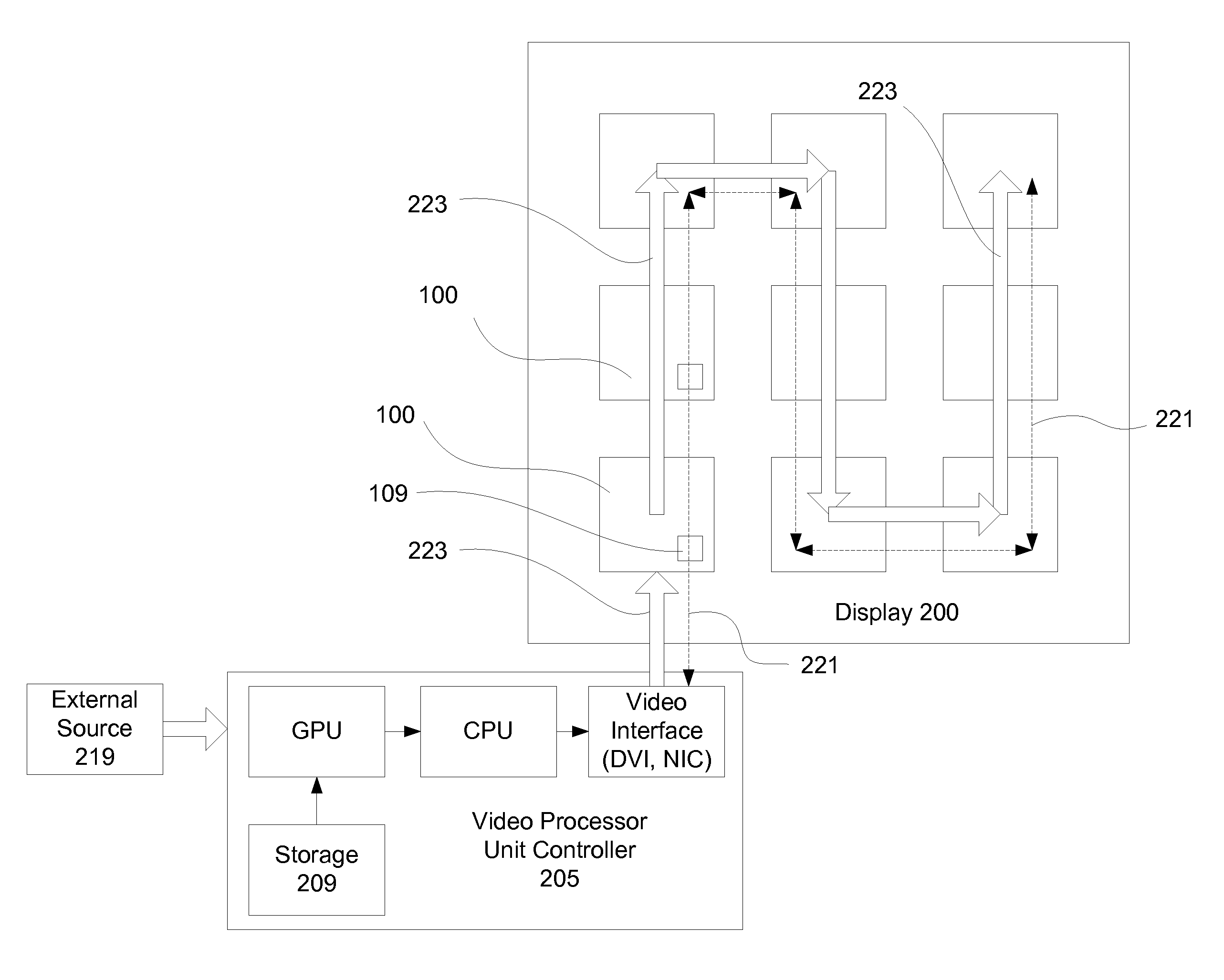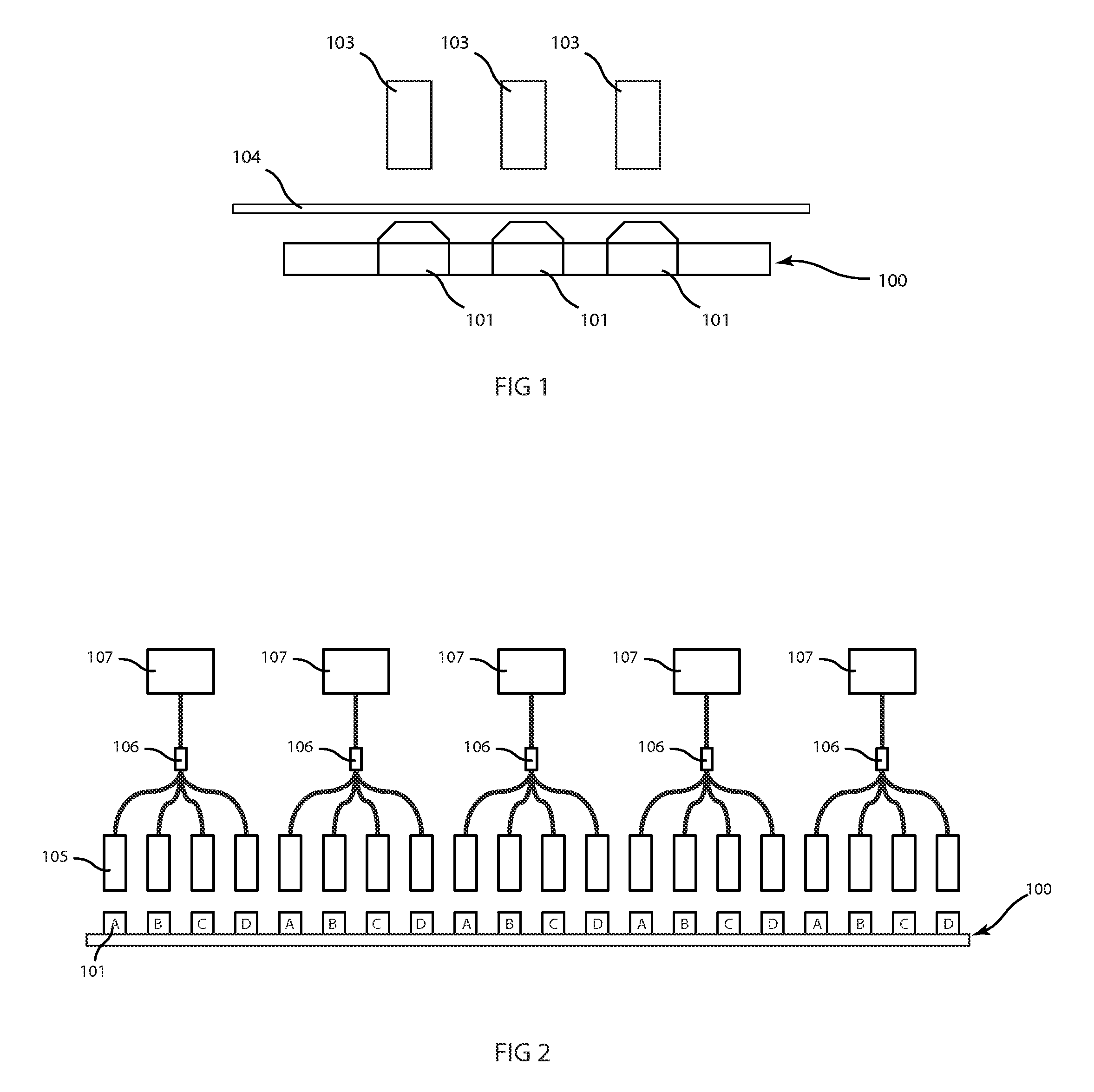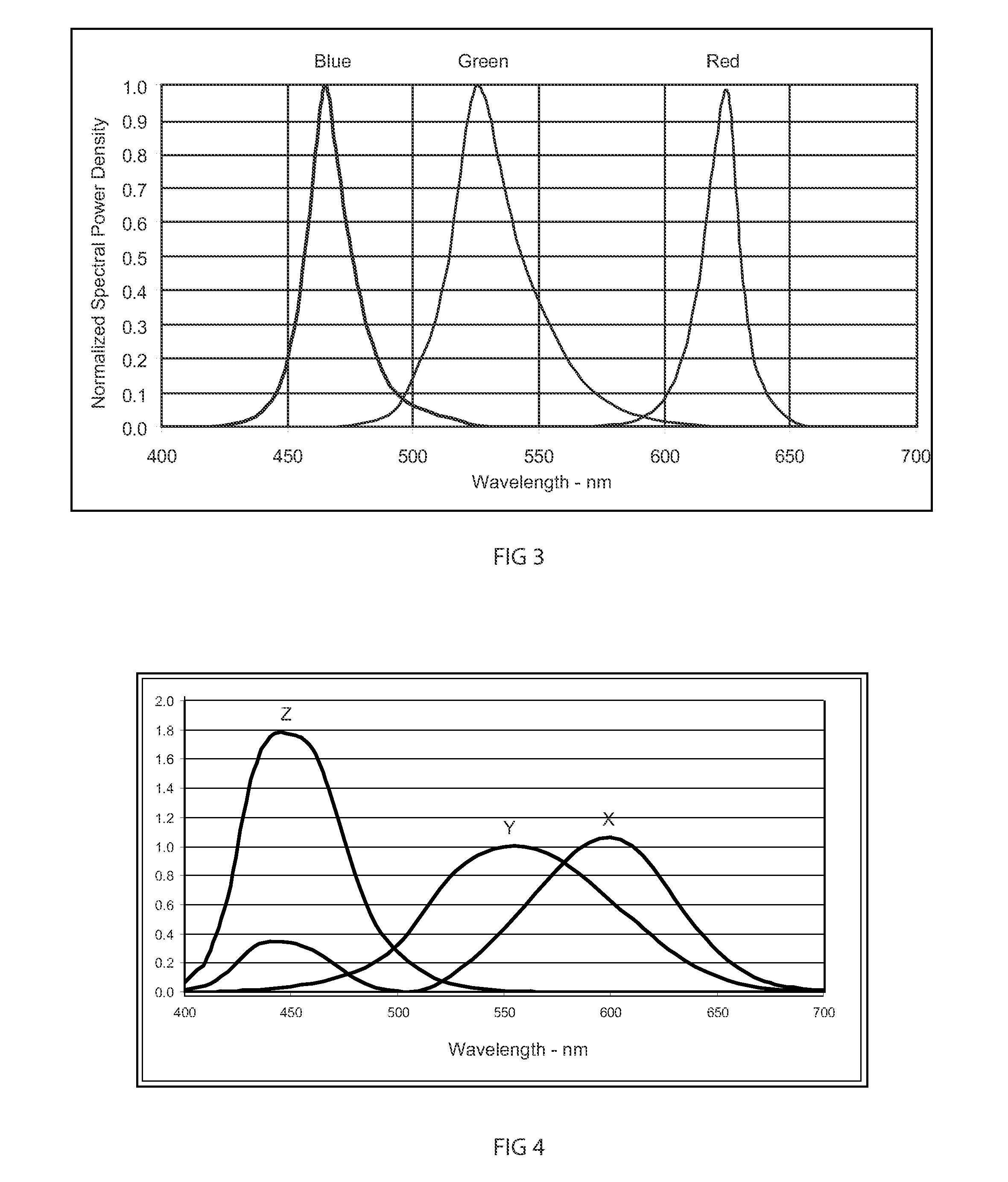Color Calibration System for a Video Display
a color calibration and video display technology, applied in the field of displays, can solve the problems of insufficient tolerance of leds and their associated drive circuitry to allow their use in uncalibrated displays, prohibitively expensive and time-consuming conventional display calibration techniques utilizing calorimeters and luminance meters
- Summary
- Abstract
- Description
- Claims
- Application Information
AI Technical Summary
Benefits of technology
Problems solved by technology
Method used
Image
Examples
Embodiment Construction
[0016]To calibrate prior art display systems comprising groups of light emitting elements, such as light emitting diodes (LEDs), prior practice has been to store values of the Commission Internationale de L'Eclairage (CIE) chromaticity coordinates (x, y) for photopic vision and luminance for each pixel to calculate transformation matrices for color calibration. However, using the CIE chromaticity coordinates ties the display to a specific color space and standard, thereby precluding any operation with alternate color spaces or in the scotopic vision color space. In other words, the prior art systems use stored values which already include correction factors or coefficients which limited the calibration of the light emitting elements to certain color spaces and standards.
[0017]In contrast, the system disclosed herein stores luminance and chromaticity data for each of the light emitting elements with the display panels to which the elements belong. From the stored normalized power spe...
PUM
| Property | Measurement | Unit |
|---|---|---|
| luminance | aaaaa | aaaaa |
| power spectral density | aaaaa | aaaaa |
| relative luminance | aaaaa | aaaaa |
Abstract
Description
Claims
Application Information
 Login to View More
Login to View More - R&D
- Intellectual Property
- Life Sciences
- Materials
- Tech Scout
- Unparalleled Data Quality
- Higher Quality Content
- 60% Fewer Hallucinations
Browse by: Latest US Patents, China's latest patents, Technical Efficacy Thesaurus, Application Domain, Technology Topic, Popular Technical Reports.
© 2025 PatSnap. All rights reserved.Legal|Privacy policy|Modern Slavery Act Transparency Statement|Sitemap|About US| Contact US: help@patsnap.com



